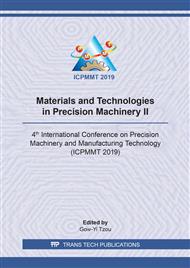p.15
p.29
p.37
p.43
p.53
p.59
p.69
p.77
p.85
Improvement Design of Adhesive Layer on Honeycomb Structure for Railway Vehicle System by Uniform Design Method
Abstract:
The purpose of this paper focuses on adhesive layer strength while having a thermal cycling of honeycomb composite sandwich structure by using the uniform design of experiments method improving the von Mises stress of honeycomb structure. Three system parameters of the honeycomb structure are selected as the control factors to be improved. Uniform design of experiment is applied to create a set of simulation experiments. Applying ANSYS/Workbench software, the finite element modelling is investigated and the von Mises stress of the honeycomb structure is calculated under metal-honeycomb core flatwise tensile test. From the numerical results, the best honeycomb structure dimension of all the experiments which causes the smaller von Mises stress is selected as the improved version of design. Finally, the best model of the experiments which causes the minimum equivalent stress is regarded as the improved version of design. Compared with the original design, the result of ASTM C297 improved version is 17.386 MPa, which mean improved 36.28%, ASTM C364 improved version is 19.015 MPa, which mean improved 25.26%, ASTM C365 improved version is 16.86 MPa, which mean improved 12.35%.
Info:
Periodical:
Pages:
53-58
Citation:
Online since:
February 2020
Authors:
Keywords:
Price:
Сopyright:
© 2020 Trans Tech Publications Ltd. All Rights Reserved
Share:
Citation:


